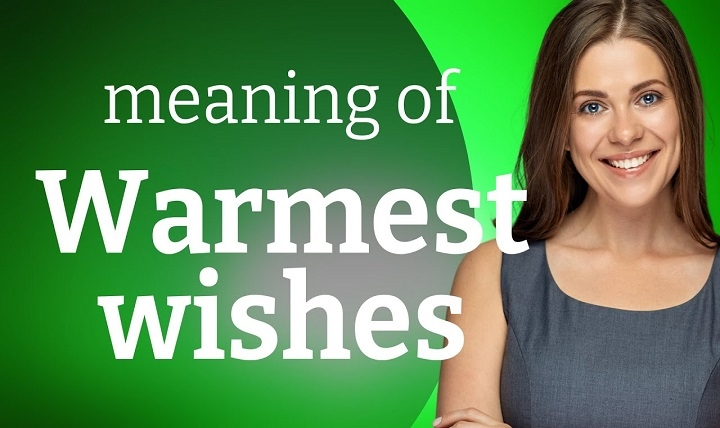You’ve likely heard or seen the phrase “Warm wishes” in birthday cards, emails, text messages, or even holiday greetings. But have you ever wondered what it truly means? Despite being short and simple, this phrase carries deep emotion, kindness, and goodwill. It’s more than just a greeting — it’s a way to make someone feel valued, remembered, and appreciated.
In this article, we explore the true meaning of warm wishes, where it’s used, and how such a small phrase can leave a big impact.
What Is the Meaning of Warm Wishes?
Warm wishes is a polite and friendly phrase used to express heartfelt emotions such as goodwill, love, appreciation, or congratulations. The word warm here refers to emotional warmth — the kind of genuine feeling you’d show to someone you care about.
It’s often used when:
- Wishing someone well
- Sending greetings for birthdays, weddings, or festivals
- Writing thank-you notes or formal emails with a kind closing
- Congratulating someone on a milestone
In short, saying “warm wishes” is like sending someone a verbal hug — thoughtful, kind, and filled with positivity.
Where and When to Use Warm Wishes
In Birthday Messages
- Example: “Sending you warm wishes for a joyful and memorable birthday!”
It adds a touch of affection and sincerity to your message, especially when writing to someone you respect or care for.
In Holiday or Festival Greetings
- Example: “Warm wishes for a joyful Diwali to you and your family!”
- Example: “Wishing you warmth and peace this Christmas season.”
It expresses festive cheer and love, often used in formal and informal messages alike.
In Thank-You Notes
- Example: “Thank you for your kind support. Warm wishes always.”
It creates a friendly tone at the end of your message and shows ongoing goodwill.
In Professional or Formal Emails
- Example: “Warm wishes, John”
This is commonly used as a polite and friendly email closing — especially in business communications that aim to balance professionalism and warmth.
In Wedding or Anniversary Wishes
- Example: “Warm wishes for a beautiful journey together!”
It adds emotional warmth to any celebratory greeting for couples.
Why People Prefer Saying “Warm Wishes”
It’s Friendly Yet Respectful
“Warm wishes” sounds gentle and kind without being too personal or overly emotional. That’s why it fits both formal and informal settings.
It Covers Multiple Emotions
Whether you’re happy for someone, grateful, congratulating, or just being thoughtful — this phrase works universally.
It Feels Sincere
There’s something about the word “warm” that feels more genuine than a plain “best wishes” or “regards.”
Common Alternatives to Warm Wishes
If you want to say something similar but slightly different, try:
- Best wishes – more formal
- Kind regards – professional
- Lots of love – more personal
- All the best – casual and friendly
- With heartfelt wishes – emotional and meaningful
- Sending love and light – spiritual and comforting
FAQs About Warm Wishes Meaning
Can “Warm Wishes” be used in formal writing?
Yes. It’s a friendly yet polite phrase, making it appropriate for both professional and personal communication.
Is “Warm Wishes” the same as “Best Wishes”?
They are similar, but “Warm Wishes” has a softer, more emotional tone, while “Best Wishes” sounds more neutral and formal.
Can I use “Warm Wishes” to end an email?
Yes, especially if you want to add a personal, kind touch to your message.
Are there cultural differences in using “Warm Wishes”?
While it’s widely accepted in English-speaking cultures, tone and context always matter. In some cultures, phrases with more direct expressions of gratitude or respect may be preferred.
Is it okay to say “Warm Wishes” to someone you don’t know well?
Yes. It’s respectful and kind without being overly familiar, which makes it safe for general use.
Though short and simple, Warm Wishes is a phrase packed with kindness and care. It brings a personal, heartfelt tone to your messages — whether you’re celebrating, thanking, or simply showing someone you’re thinking of them. The next time you sign a card, write an email, or send a text, remember the quiet power of those two words.


